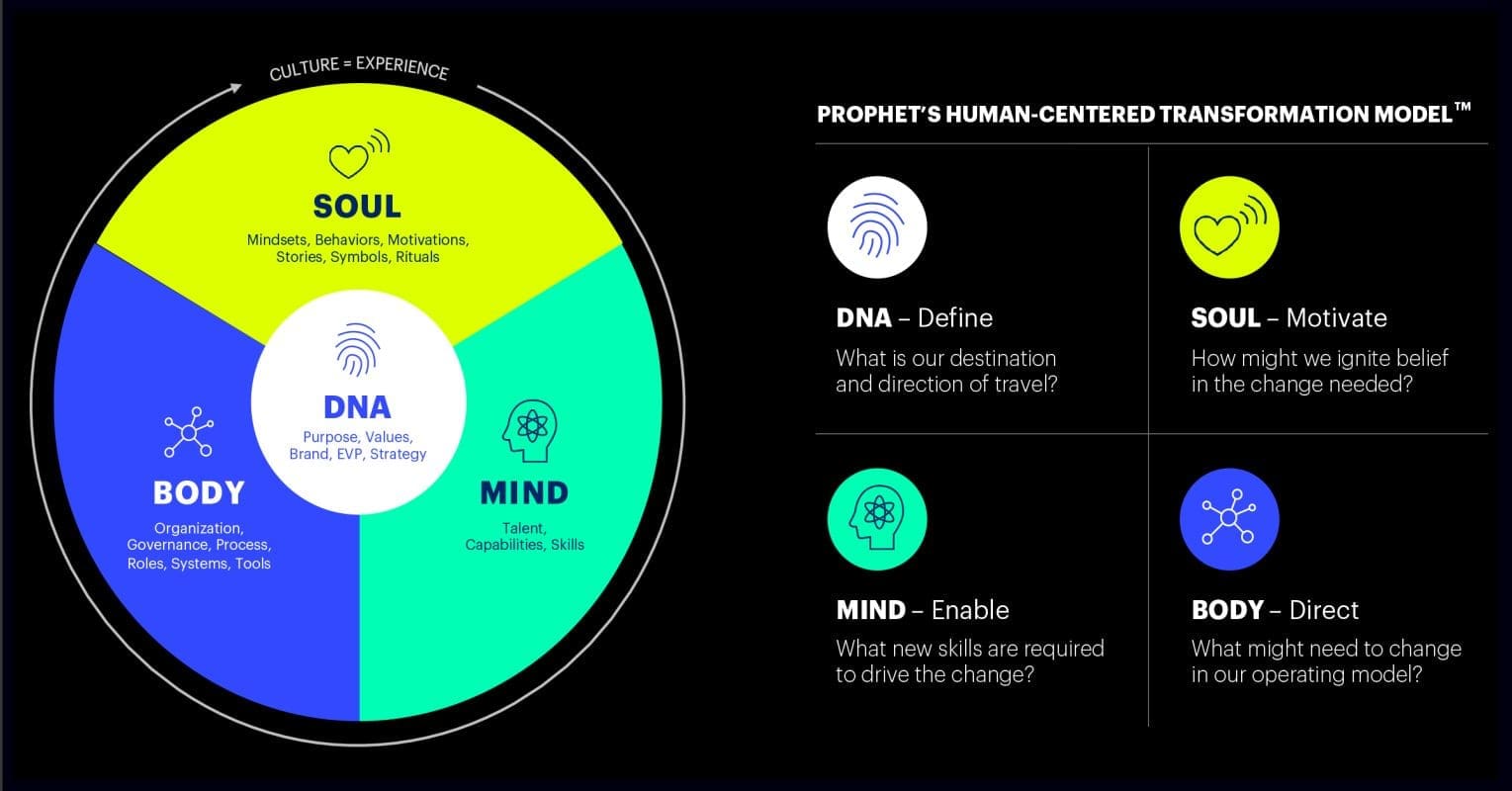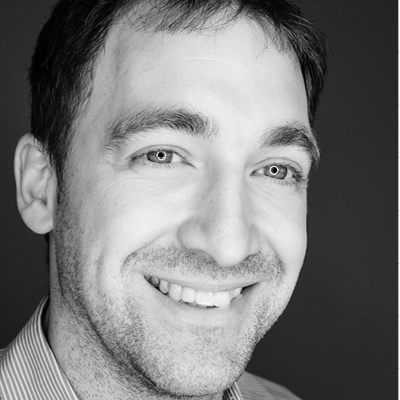BLOG
5 Questions on Culture Transformation
Key insights on developing and maintaining the best roadmaps for cultural transformation.
Recent world-altering shifts have led to a spotlight being put on organizational culture. As many look to build the cultural resilience needed to help accelerate transformation efforts, Bernhard Schaar, Associate Partner, talks to Helen Rosethorn, Partner and Co-Lead of Prophet’s Organization & Culture practice to understand how organizations might best focus their efforts supported by insights from the practice’s latest global research.
1. What is the model or methodology you use when approaching cultural transformation work with clients?
No matter how digitally-driven an organization may be, it is still human. And for sustained and impactful transformation to happen people must change what they do in a sustained and impactful way. Two years ago, we designed the Human-Centered Transformation Model™ to reflect this core belief.

Just like a human, all organizations have DNA – the coding that guides it, be that purpose, values, brand or strategy. It also has a Soul – these are the rituals, symbols and behaviors that reflect the beliefs of the organization. It has a Mind – which are the capabilities required to enable it to operate – such as talent and learning to ensure the organization has the skills and expertise to deliver on its goals. And it has a Body – and by this, we mean the operating model and organization design that directs its operations – translating into processes, systems and aspects of governance.
This thinking has helped a lot of our clients grasp that culture needs to be understood as a holistic ecosystem and successful transformation today requires leaders to think about every aspect of this ecosystem.
2. Transformation can be daunting. Where should organizations start when it comes to cultural transformation and driving this change?
In our research last year, (‘Catalysts: The Cultural Levers of Growth in the Digital Age’) we spoke to business leaders to understand WHAT aspects of culture are critical to successful transformation in the digital age. This year, our actionable global report outlines the HOW –how and where to focus efforts in order to power transformation from the inside out.
“No matter how digitally-driven an organization may be, it is still human. And for sustained and impactful transformation to happen people must change what they do in a sustained and impactful way.”
We have identified four pathways of change, which are designed to help leaders understand their “starting point” in the Human-Centered Transformation Model™ based on their perceived immediate need for transformation. We were being asked this key question over and over again: where should I start? So, the pathways are there to provide a perspective for executives to identify exactly where. There are two things to flag though. Firstly, organizations often focus on where it is “comfortable” to start within their cultural context to activate change – that might not mean it is the right place to start. For example, there are organizations where a “comms” focus seems the natural way to kick off change because it feels logical to have everyone “in the know” but very little of substance happens beyond that and change efforts run out of steam, nothing is “landed”. Secondly, even if you start for example with enabling the transformation through a focus on talent systems because you identify that this is what may be holding you back, you still need to consider the whole of the Human-Centered Transformation Model™ to build sustained and real change.
3. Is there any area of the Human Centered Transformation Model™ that should be prioritized over others?
If there is one that is more critical than another it is DNA – if you do not define the change and align on what that means, then you have a “hole below the waterline” from the get-go. Even if it is a small hole it will come back to haunt you. What is particularly interesting in relation to this is the emergence of the Transformation Management Office (TMO) in service of both the ambition and the roadmap to get there. The report sets out compelling data about the organizations that achieve greater transformational success through setting up a dedicated TMO.
4. What are your three key takeaways from this year’s report?
- There is no silver bullet – I can’t reiterate this enough. To achieve effective transformation, you need to align the whole Human Centered Transformation Model™
- Select the right starting point – as the pathway focus reveals, selecting the right starting point drives real progress.
- Harness the many different voices – if you need to elevate one leadership behavior that will serve you well to add value to your transformation then it is the ability to harness the “employee voice” of your organization. By this we mean enabling the ideas, opinions and feedback of everyone at every level of the organization. Deep cross-functional collaboration and engagement are required to make transformation work.
5. What impact has COVID-19 had on cultural transformation and on the findings of the Catalysts in Action research report?
COVID-19 is accelerating existing transformation ambitions for many organizations or forcing a reinvention for others, and every shade in between. It also obviously adds complexity because right now nothing is certain, there is a two-speed transformation going on – or maybe better expressed as a transition and a transformation happening at the same time. One would be hard enough for any organization to manage but two speeds of change is particularly challenging. However, in the current context, change cannot be considered in an isolated way.
FINAL THOUGHTS
We are in a place where transformation is not a “private thing”. It is playing out right now across the stakeholder ecosystem of every organization – and that brings with it a whole new level of responsibilities starting with employees and the way transformation in particular plays out for them. Fielding our research in the midst of COVID-19 in certain markets and on the brink in others actually reinforced the validity of the levers we outlined in our 2019 report and we, therefore, believe the results would have been the same even if the circumstances were different.
Interested in learning more?
Download Prophet’s 2020 global research report: “Catalysts in Action: Applying the Cultural Levers of Transformation”.
Watch the replay of the webinar, in which the study authors discuss the key results of the report.
If you would like to learn more about how you might shape your culture to thrive on change and accelerate transformation then contact us today.
